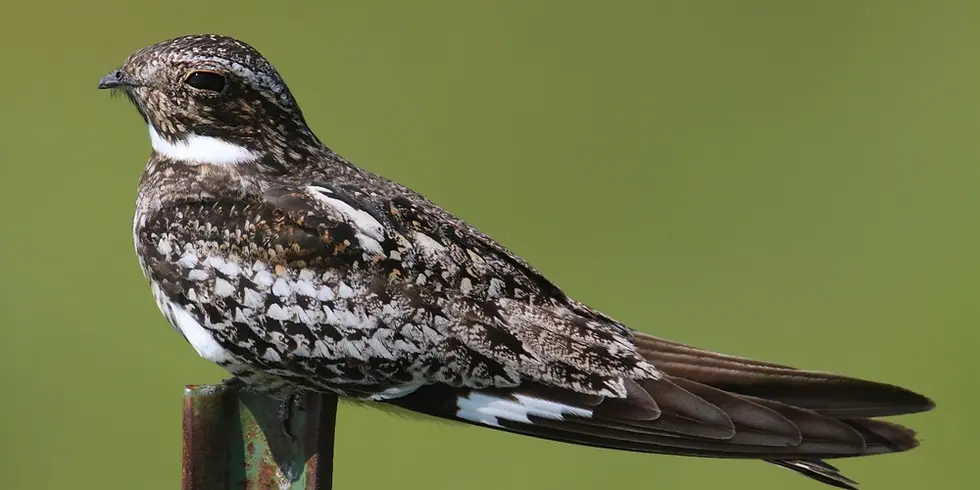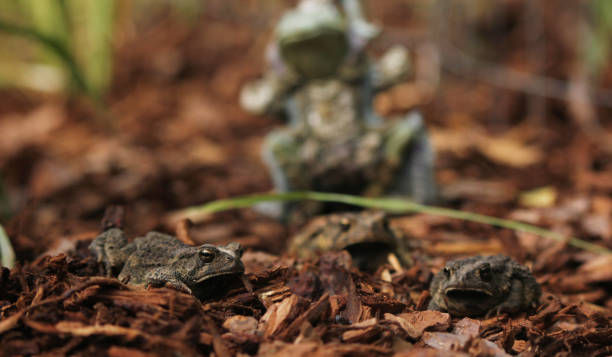Birds That Eat Mosquitoes in Florida | Port St. Lucie, Delray Beach
- Adam Allen

- Dec 18, 2023
- 7 min read
In Florida's diverse environment, where mosquitoes can be a nuisance, investing in pest control takes on added importance.
Consider investing in pest control solutions to complement the natural balance that birds bring to managing mosquito levels in Florida.
Although pest control is the most effective way to control mosquitoes, it’s interesting to understand the different mosquito control that takes place in nature…like birds that eat mosquitos!
Let’s unpack that!
Key Takeaways
A variety of birds in Florida, including hummingbirds, swallows, and warblers, play a significant role in naturally controlling mosquito populations.
Attracting these birds to your yard through freshwater sources, diverse feeders, and safe shelters can enhance natural mosquito control.
For mosquito infestations, seeking assistance from professional pest control services like Southeast Florida Pest Control is a reliable solution.
Bird Species That Dine on Mosquitoes
Florida's diverse bird population is a key player in controlling the mosquito population. Many of these feathered residents have diets that include mosquitoes, making them our natural allies in pest control.
American robin (Turdus migratorius)

The American Robin, a familiar sight in Florida, graces the state with its presence from late August through early spring. These robust, cheerful birds are easily recognized by their bright red breasts and melodious songs.
American Robins are versatile in their diet, eagerly consuming mosquitoes, termites, and other pests, making them a natural asset in controlling mosquito populations. In addition to their insectivorous habits, they have a sweet tooth for fruits such as grapes and berries. This varied diet not only aids in pest control but also supports their nutritional needs throughout different seasons.
American Robins thrive in a variety of habitats, including suburban lawns, parks, and forests. They are often seen hopping across the grass in search of insects or perched in trees enjoying a fruity snack.
Eastern Phoebe (Sayornis phoebe)

Eastern Phoebes are charming little songbirds with a soft, plaintive call that make their way to Florida during the winter months. These migratory birds, with their muted colors and unassuming appearance, are skilled insect hunters. They primarily feed on flying insects, including mosquitoes, making them a natural ally in mosquito control.
When insect populations dwindle, Eastern Phoebes adapt their diet to include berries and fruits. They are commonly found near water bodies or open fields in Florida, where they can easily spot and catch flying insects.
Blackpoll warbler (Setophaga striata)

The Blackpoll Warbler, a small yet mighty bird, makes a notable appearance in South Florida each spring, completing one of the longest migrations among songbirds. These birds are not just remarkable for their long journeys but also for their role in the local ecosystem.
Although their primary diet consists of spiders, lice, and centipedes, Blackpoll Warblers won't hesitate to include mosquitoes in their meals during their flights. This opportunistic feeding behavior makes them helpful in reducing mosquito populations, albeit indirectly.
With their distinct black and white plumage and high-pitched songs, Blackpoll Warblers are a delightful sight in Florida's forests and woodlands. Their preference for higher canopies doesn't hinder their ability to impact the mosquito population, as they catch these pests mid-air.
Ruby-throated hummingbird (Archilochus colubris)

The Ruby-throated Hummingbird is known for its iridescent plumage and rapid wingbeats. While these birds are often seen hovering around flowers for nectar, their diet is surprisingly diverse. Insects, including mosquitoes, comprise a significant portion of their food intake, accounting for up to 60% of their diet. This insect consumption not only fuels their high-energy lifestyle but also aids in mosquito control.
These tiny birds are adept at catching small flying insects mid-air, often in and around flowering plants where mosquitoes are likely to be found. Their presence in gardens and natural spaces contributes to the natural pest management system, making them invaluable allies in the fight against mosquitoes.
Barn swallow (Hirundo rustica)

Barn Swallows, with their distinctive forked tails and agile flight, have become a familiar sight in Florida, particularly around water bodies. These birds are voracious insect eaters, and mosquitoes form a significant part of their diet. You can usually find them around water bodies because these areas are often teeming with mosquitoes and other flying insects, providing abundant food sources for barn swallows.
Their nesting habits often bring them close to human habitation, as they build their nests out of mud in structures like barns and under bridges.
Geese and Ducks

Waterfowl such as geese and Muscovy ducks are active participants in controlling mosquito populations. These birds are particularly effective in managing mosquito numbers as they feed on mosquito larvae, which are often found in abundance in standing water and wetlands. By consuming these larvae, geese, and ducks significantly reduce the potential number of adult mosquitoes.
Muscovy ducks, in particular, are known for their appetite for mosquito larvae. They often forage in shallow waters, where they can easily access and consume large quantities of these larvae. This natural feeding behavior is crucial in disrupting the life cycle of mosquitoes, preventing them from maturing into flying adults that could potentially spread diseases.
Nighthawks (chordeilis minor)

Nighthawks, which aren't true hawks, pass through Florida during their migration to South America. These nocturnal birds are adept hunters of flying insects, including mosquitoes. Nighthawks are especially known for their unique hunting style: They catch their prey on the wing during the evening or early morning hours, often near sources of light where insects congregate.
Their diet mainly consists of flying insects such as mosquitoes, making them natural allies in pest control. Nighthawks are also known to take advantage of termite or ant swarms, where they can be seen feasting in large numbers.
Eastern bluebirds (Sialia sialis)

Eastern Bluebirds, with their vibrant blue plumage and melodious songs, are a delightful sight in Florida. These small but effective birds are skilled insect hunters, swooping down on grasshoppers, crickets, and mosquitoes, making them valuable in controlling insect populations.
In addition to insects, their diet is diversified with millipedes, small frogs, and a variety of berries. Eastern Bluebirds are often found in open fields and woodlands, where they can easily spot their prey from their perches. They also play a role in seed dispersal, thanks to their fruit consumption, contributing to the health of their habitats.
Northern cardinal (Cardinalis cardinalis)

The Northern Cardinal, with its striking red plumage and distinctive crest, is a beloved resident songbird in Florida. While these birds predominantly feed on grains, they also play a part in natural pest control by preying on mosquitoes. This dietary flexibility allows them to adapt to different food sources throughout the year.
Northern Cardinals are commonly found in gardens and woodlands, where they not only bring beauty and song but also help in managing mosquito populations. They often forage for food on the ground but can also be seen catching insects in flight, showcasing their versatility as both seed eaters and insect hunters.
Purple martins (Progne subis)

The purple martin, known for its glossy blue-black plumage and gregarious nature, is a celebrated mosquito eater in Florida. These birds, the largest of the North American swallows, are esteemed for their appetite for flying insects, including mosquitoes.
These birds are often seen gracefully swooping over water bodies and open fields, where they hunt for food. Their diet primarily consists of insects caught in the air, making them a natural and effective method for reducing mosquito and other insect populations.
Attracting Mosquito-Eating Birds to Your Home

Creating an inviting environment for mosquito-eating birds is a natural and enjoyable way to manage mosquito populations in your Florida home. Here are some tips to attract these helpful avians:
Fresh water source
Providing a fresh water source is crucial for attracting birds, especially during Florida's hot weather. Clean, moving water in birdbaths or fountains is ideal, as it not only quenches their thirst but also allows them to bathe and stay cool.
Ensure the water is not stagnant, though, as this could attract more mosquitoes rather than deter them. Regularly changing the water and keeping the birdbath clean will make it more appealing to birds.
Diverse seeds
A variety of seeds will attract different bird species to your yard. From sunflower seeds to safflower and millet, the diversity in your offerings can appeal to a wide range of birds, including those that consume mosquitoes. Consider using hopper feeders or spread seeds in different areas of your garden to cater to different feeding habits.
Ground cover for shelter
Birds need safe places to hide from predators and harsh weather. Planting ground cover and shrubs provides essential shelter and nesting spots for birds. This habitat creation not only encourages birds to stay longer in your yard but also enhances the natural beauty of your garden.
Keep pets indoors
Cats and dogs can be a deterrent to birds. To create a safe and welcoming environment for birds, it's advisable to keep pets indoors or supervised when outside. This ensures that birds feel safe and are more likely to visit and remain in your yard.
When Birds Aren't Enough: Call in the Experts
As we've seen, a variety of birds in Florida play a crucial role in naturally managing mosquito populations. However, sometimes the mosquito problem can be too overwhelming for our avian friends to handle alone. When you find that the mosquitoes in your area are too numerous and persistent, it's time to call in the experts—the non-avian kind.
That's where Southeast Florida Pest Control comes in. With branches in Port St. Lucie, Delray Beach, and beyond, our team of professionals is well-equipped to handle mosquito infestations of any size. We use eco-friendly and effective methods to control and reduce mosquito populations, ensuring your outdoor spaces are comfortable and safe for you and your family.
At Southeast Florida Pest Control, we understand the local mosquito challenges and tailor our solutions to meet the specific needs of each community we serve. Whether it's a backyard barbecue or a peaceful evening on the patio, our goal is to provide you with a mosquito-free environment so you can fully enjoy the beautiful Florida outdoors.
So, if you're dealing with a mosquito problem that seems too big for nature's pest controllers, don't hesitate to reach out to us. We're here to help you reclaim your outdoor space from these pesky intruders. Call us at 855-507-0857.
Summary
The battle against mosquitoes finds a natural ally in the diverse bird population we have in Florida. Birds play a crucial role in controlling mosquito populations. While these birds provide a significant level of natural pest control by feeding on mosquitoes and their larvae, attracting them to residential areas can further enhance this benefit.
However, when the mosquito problem exceeds what nature can handle, professional pest control services become essential. These experts can provide more extensive solutions to ensure comfortable and mosquito-free environments.
Frequently Asked Questions
What birds eat most mosquitoes?
Purple martins and barn swallows are among several birds known to eat the most mosquitoes. They feed extensively on flying insects, including mosquitoes, making them valuable for natural mosquito control.
What is the biggest predator of the mosquito?
Aside from birds, bats are considered one of the biggest predators of mosquitoes. They consume large quantities of insects during their nightly flights.
What smell does a mosquito hate?
Mosquitoes are known to dislike certain smells, including citronella, eucalyptus, lavender, peppermint, and lemongrass. These scents are often used in natural mosquito repellents to deter them effectively.
What kills mosquitoes?
Mosquitoes can be killed through various methods, including natural predators like birds and bats and mosquito traps. Additionally, eliminating standing water can disrupt their breeding cycle, reducing their populations. For professional yet non-toxic mosquito control, call Southeast Florida Pest Control at 855-507-0857.



